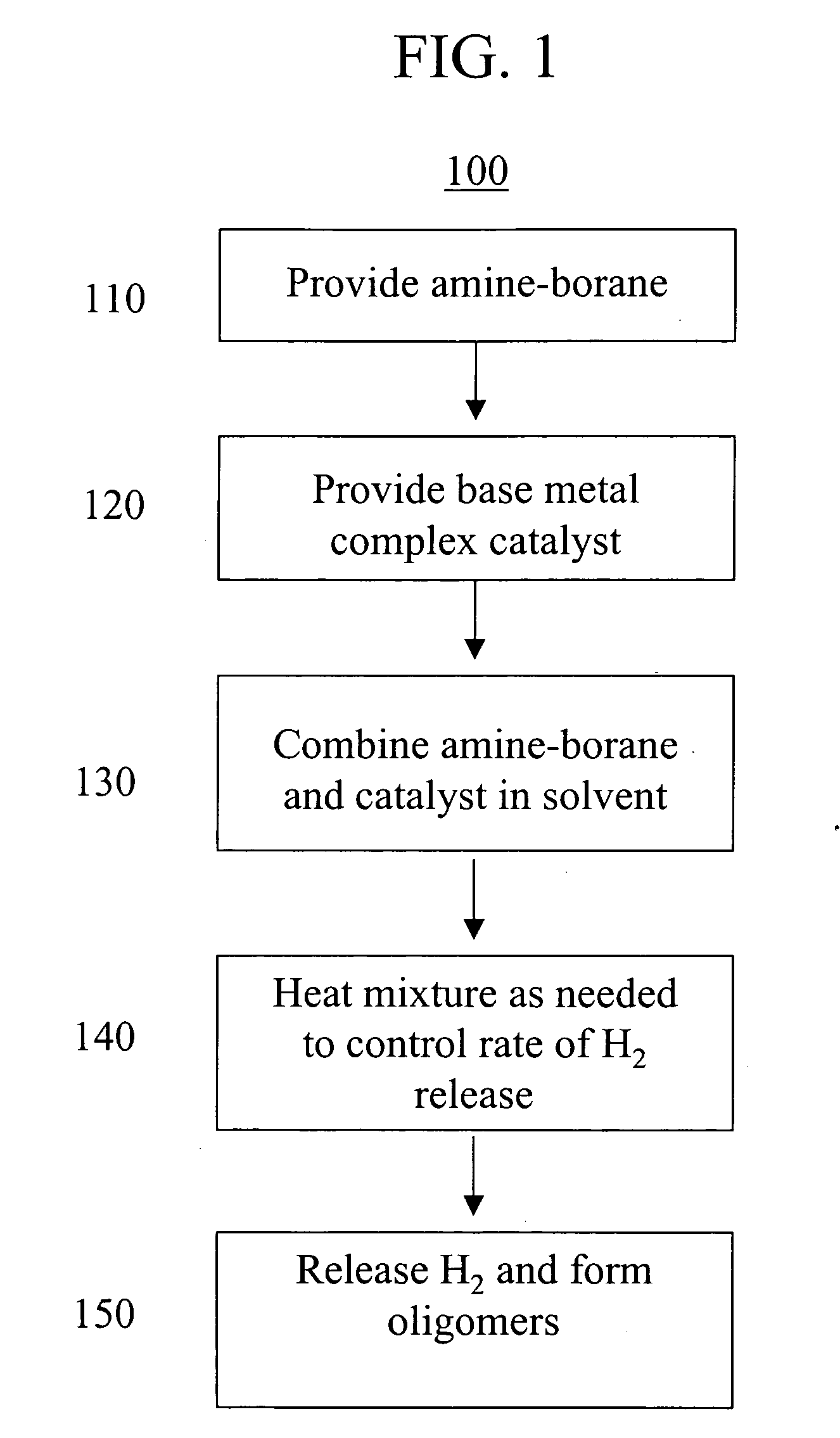Base metal dehydrogenation of amine-boranes
a technology of amine-boranes and base metals, applied in the field of amine-boranes, can solve the problems of low energy (i.e., minimal heat input) methods only just being developed, and the method of dehydrogenating amine-boranes at low temperature requires the use of expensive precious metal catalysts
- Summary
- Abstract
- Description
- Claims
- Application Information
AI Technical Summary
Problems solved by technology
Method used
Image
Examples
example 1
Preparation of Amine-Borane
[0022] Amine-borane was prepared as follows. In one method, anhydrous ammonia gas was bubbled through a 1 M solution of BH3.THF in THF for 1 hour at 20° C. Alternatively, equimolar amounts of a 1 M solution of BH3.THF in THF and a 0.5 M solution of NH3 in dioxane were combined at 20° C. Ammonia-borane was purified by precipitation from the reaction mixture using hexane and subsequent recrystallization from THF / Et2O.
example 2
Thermal Dehydrogenation of Ammonia-Borane without a Catalyst
[0023] A solution of 14 mg ammonia-borane (0.46 mmol) in 0.5 mL of 1,2-dimethoxyethane and 1 mL of C6D6 was heated at 60° C. for 19 hr. Conversion was ca. 60% to a 3:1 mixture of [H2NBH2]n and [HNBH]3.
example 3
Iron P-Ligand Complex-Catalyzed Dehydrogenation of Ammonia-Borane
[0024] A solution of Fe(Et2PCH2CH2PEt2)(PMe3)3 (6.7 mg, 0.02 mmol) in C6D6 was added to 2.5 mg (0.08 mmol) of solid ammonia-borane (H3N—BH3) at room temperature. Reaction progress was monitored by 1H and 11B NMR over time. After several days a mixture of [H2NBH2]n and [HNBH]3 was obtained.
PUM
| Property | Measurement | Unit |
|---|---|---|
| temperature | aaaaa | aaaaa |
| temperature | aaaaa | aaaaa |
| temperature | aaaaa | aaaaa |
Abstract
Description
Claims
Application Information
 Login to View More
Login to View More - R&D
- Intellectual Property
- Life Sciences
- Materials
- Tech Scout
- Unparalleled Data Quality
- Higher Quality Content
- 60% Fewer Hallucinations
Browse by: Latest US Patents, China's latest patents, Technical Efficacy Thesaurus, Application Domain, Technology Topic, Popular Technical Reports.
© 2025 PatSnap. All rights reserved.Legal|Privacy policy|Modern Slavery Act Transparency Statement|Sitemap|About US| Contact US: help@patsnap.com

